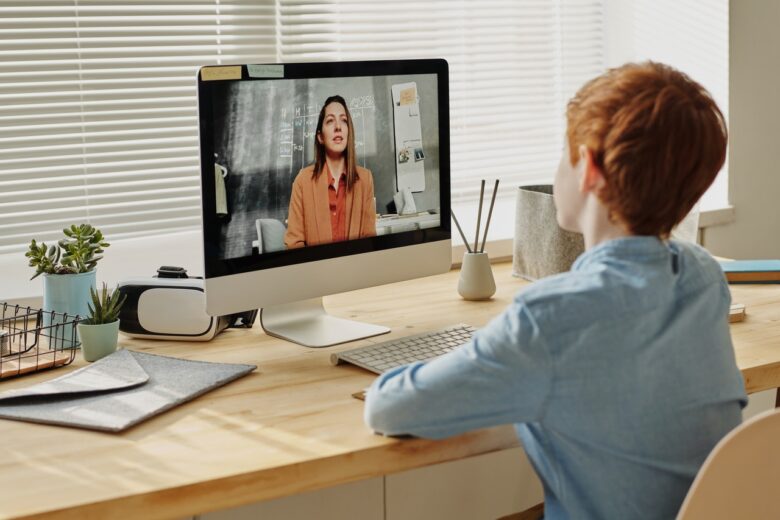In an effort to contain the spread of the coronavirus, education systems across the world have closed down schools and implemented alternative learning arrangements. These days, it’s common to encounter the term “distance learning” in respect to this practice.
As many countries continue to make the shift towards a different mode of learning, technology is playing a vital role in preparing teachers, students, and parents for this new paradigm. Alongside investments in new educational infrastructure and the implementation of teacher training programs, there is also a need to develop learning management systems that ensure the proper delivery of distance learning targets. App developers and startups have already rolled out such tools, and many more are currently on the works.
If you are in the business of providing software solutions to the educational sector or just an average joe with a knack for app development, then you can do your part in creating a distance learning platform that could also be usable even after COVID-19.
Here’s a guide on how you can go about this:
1. Know your objectives

Source: pexels.com
As you plan out a distance learning app, you need to know your reason for being. With this in mind, start by drafting out a mission statement that includes the goals you want your app to achieve.
Whether it’s to provide teachers with an easier way to create and monitor their online classes or help students embrace new technology for learning, you need to be very specific with your goals. This will make it easier for you to address the other steps in the development process, like knowing what features to include and devising an intuitive user interface.
2. Solve specific problems

Source: pexels.com
Other than focusing on goals, you want your app to resolve the problems that distance learning arrangements might pose. The majority of teachers and students were unprepared for this sudden shift in modality, so designing your app so that it addresses the problems and challenges of distance learning should be at the core of the project.
For this, you can work closely with policymakers and administrators of educational institutions to identify critical issues that would complicate distance learning. Issues like complex home environments, limitations in terms of network reliability and technological adoption, as well as the psychosocial effects of the pandemic should be considered as you draft out the platform.
3. Know what features to include

Source: researchleap.com
Now that you know what your distance learning app is for and what problems it aims to resolve, you now have to identify the features to incorporate. But first, this software should have all of the following attributes:
- Intuitive – The app should be easily navigable and should not require too much time to understand and operate certain functions. At times, teachers and students will have to figure out how to use the app by themselves, so you aim for it to be user-friendly.
- Efficient – The app should help teachers save time in delivering lessons, delegating tasks, and conducting performance assessments, while helping students perform tasks easily.
- Engaging – The app should make the learning experience fun and interactive for students. It should also provide teachers with space for modifying their lessons based on the individual needs of learners.
With these attributes in place, your distance learning app should have the following features implemented:
- Profile customization – You want teachers and students to have a simple way to create personalized accounts and add information. It should also allow them to upload an avatar image and choose themes or wallpapers..
- Dashboard – Every app has to have a dashboard where everything can be managed. It should have a newsfeed that allows students to see the latest activities, assignments, and uploads from teachers.
- Integrated grading system – With this feature, teachers can give scores to certain tasks which are automatically encoded into a virtual grading sheet. This should bring added convenience by making grades organized.
- Rich media – Distance learning provides opportunities to use a variety of digital materials, from videos to infographics and interactive web applications. Your distance learning app should allow teachers to upload and share various types of media that enrich the experience for students.
- Integration with a communication platform – Why use different apps for managing lessons and holding online classes when you can combine both into a single platform? Your app should be integrated with communication platforms like Zoom and Skype so users won’t have to go through the trouble of switching apps.
- Mobile optimization – Lastly, the app should perform seamlessly regardless of what device it’s used on. Whether it’s a tablet or a smartphone, lessons should be just as engaging and effective as they are through a desktop PC or laptop.
4. Test your app

Source: pexels.com
The testing phase should be the most critical part of the development process. And unlike other types of apps, your distance learning should undergo rigid trials that gauge its user-friendliness, performance, and applicability.
So, before rolling out your app, make sure to hold a focus group and conduct A/B testing with teachers and students. Be sure to keep tabs on performance issues and ask for feedback.The key here is to conduct numerous trials so you can gather enough insights to refine your app and fix bugs.
5. Roll it out

Source: arundo.net
Once you have settled for a final version of the app, you will need to pitch this to an educational institution or your local school district. Before that, you will need an intellectual property lawyer to protect your app from being replicated by other organizations or individuals, assuming it has groundbreaking features. Click here to read more about intellectual property law.
At any rate, you will need to promote your app to those who need it, so make sure to devise a well-thought-out presentation and demonstration.
The COVID-19 pandemic may have closed down schools, but it has not stifled the need for children to learn. By developing a distance learning app yourself, you are doing communities a huge favor by ensuring learning continuity during these difficult times.




